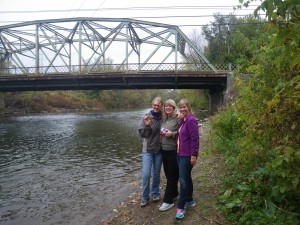December 1, 2013
 Phewww. It’s cold outside! This precious pic is my five-year-old grandson snuggled with a furry raccoon stuffed animal and wearing a soft and cuddly raccoon hat. For his nap. He knows how to stay warm!
Phewww. It’s cold outside! This precious pic is my five-year-old grandson snuggled with a furry raccoon stuffed animal and wearing a soft and cuddly raccoon hat. For his nap. He knows how to stay warm!
I recently finished reading Levitt’s book, “Deadly Outbreaks: How Medical Detectives Save Lives Threatened by Killer Pandemics, Exotic Viruses, and Drug-Resistant Parasites.” [http://www.amazon.com/Deadly-Outbreaks-Detectives-Threatened-Drug-Resistant/product-reviews/1626360359/ref=dp_top_cm_cr_acr_txt?ie=UTF8&showViewpoints=1]
Published by Skyhorse Publishing in 2013, this book could provide the basis of a TV drama series and contribute to the audience’s understanding of how public health is organized and delivered in the US and why so many large nations want to model our approach.
The author hopes to introduce readers to field epidemiology, even getting them excited about it as a possible career choice. Because the book is carefully researched and provides a thorough narrative regarding the seven cases highlighted, she may achieve that aim. For these reasons, I will recommend it in future health communication seminars I teach and recommend it to you as well. Here’s more about why.
The CDC’s Epidemic Intelligence Service trains medical detectives, doctors who want to track down the source of population and health risks and guide the public health response. Dead birds, mosquitoes, New York City parks, and West Nile virus–collaboration with animal health officials brought a focus to disparate views about what was happening and what needed to be done in the book’s opening case.
Levitt then moves to a case giving us a historical context for modern policy related to refugees medical screening and movement into the US. This is a chapter that makes clear the need to be assertive in the public health sphere when faced with competing political agendas, to exercise skills that don’t traditionally come to mind when identifying the meaning of epidemiology. These skills include the ability to talk to [not ‘at’] members of local communities and to engage in participant observation, taking thorough notes to document both.
The third case takes us behind the scenes of a hospital in order to uncover the origin of unexplained deaths of children. A wide range of possible explanations were considered and found to be insufficient, including toxic fumes from repair work on the roof entering through air ducts. The point-by-point discourse guides us to both a conclusion and to new policy as accepted practice in most US hospitals today.
The fourth chapter guides the reader through the 1970s case of Legionnaires’ disease. Perhaps because I remember this one well, I was fascinated to read what was going on behind the scenes.
The last three cases introduce other contexts where the public’s health can either be supported or quickly go awry. I will never be on the interstate again passing a tanker-trailer truck labeled as carrying anything related to food without wondering about the conditions for keeping the food safe and bacteria free. Right now, most of the media images of the snowfall and road accidents involve those large semis. How many of them are carrying food-related products and what happens as they have to wait out the storm? What protocols kick-in? I feel comforted, but likely falsely so, that it is cold rather than blistering heat leading to breakdowns. I am thinking that keeping the chill on reduces bacteria’s chance to grow, thought it does not die, as discuss in the fifth case in the book. The case introduces us to FoodNet, a national surveillance system supported by the CDC to track foodborne pathogens.
The sixth chapter explicitly introduces the reader to the important principle of medical detectives sleuthing by asking ‘what if’. Asking that question and revealing the conversations that ensue really does remind me of one of the TV drama show that has been number one for years now and Abby’s character at work in the lab. Different context further broadened with the case in the last chapter. Not one we often have the privilege of looking behind the curtain at. But fascinating and filled with content to engage and inform. I highly recommend this book. Not one for light reading, but one that you will be glad you invested your time in.





 March 1, 2010
March 1, 2010